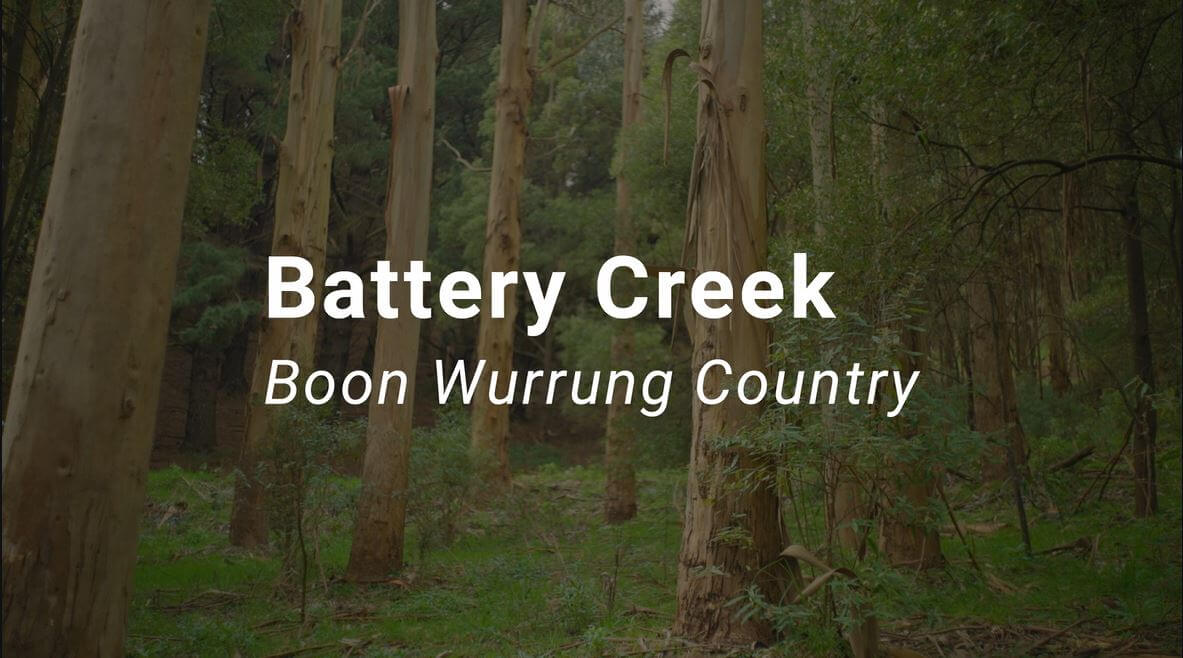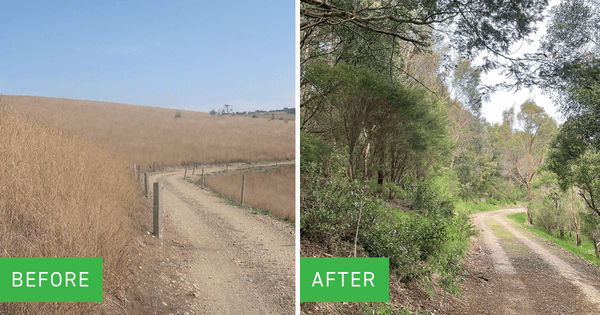
Growing on Boonwurrung Country, Battery Creek is one of Greenfleet’s oldest forests and has been growing for over 25 years. It was established in partnership with South Gippsland Water to extend native ecosystems in the Battery Creek Catchment and deliver significant climate action by removing carbon.
First planted in 1999, Battery Creek was restored across 10 years, resulting in the creation of a thriving native forest that is providing habitat to native insects, birds and wildlife.
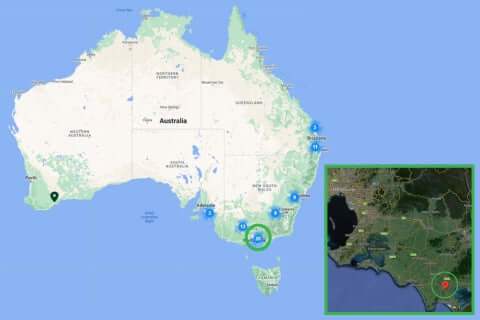
Location & Map
Located on Boonwurrung Country near Fish Creek in South Gippsland, the Battery Creek site was once cleared farmland.
Greenfleet has multiple legally protected native forests growing in the Gippsland region as it is fertile ground for growing habitat for wildlife, including koalas. You can see where more of Greenfleet’s reforestation projects are growing here.
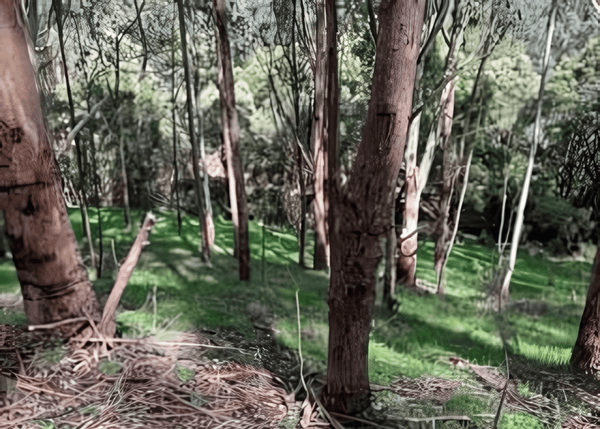
Species Selection & Revegetation Approach
The forest at Battery Creek was restored by Greenfleet between 1999 and 2009. The selected species are growing to restore a number of ecosystems native to the region including Lowland Forest, Wet Forest and Damp Healthy Rainforest. The 22 locally native species planted included a variety of Eucalypts, Wattles and Tea Trees.
Species such as Silver Wattle (Acacia dealbata) and Snowy Daisy Bush (Olearia lirata) are providing habitat and nectar to bees and insects as they grow. Eucalypt species such as Narrow-leaf Peppermint (Eucalyptus radiata) and Swamp Gum (Eucalyptus ovata) are vital informing the forest canopy and proving long-lasting habitat.
Another species included in the planting, is the Strzelecki Gum (Eucalyptus strzeleckii). This critically endangered species is endemic to this region and Greenfleet aims to include it in all South Gippsland plantings to increase its prevalence in the region.
Forest assessments completed in 2023 demonstrated that seven new native plant species were growing in the Greenfleet revegetation area that were not part of the original species list. Greenfleet plants species that are native to the local area which can provide the framework for resilient ecosystems to grow. Having native species naturally recruit in projects such as this shows that our approach can bolster biodiversity and allow native ecosystems to thrive.
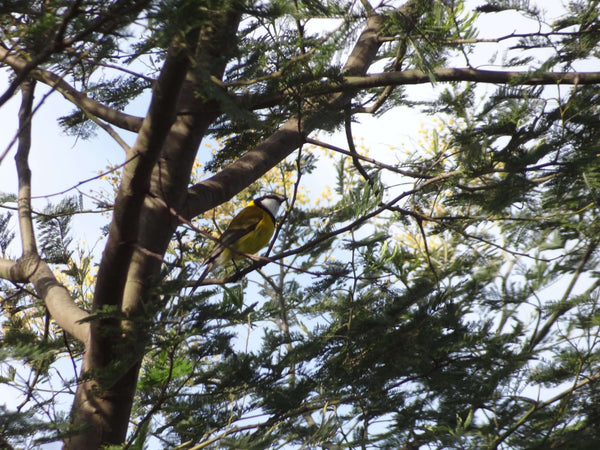
Wildlife Habitat Restoration
While delivering climate action and bolstering water quality in the region, the forest at Battery Creek is also providing habitat for animals and insects that call the region home.
A biodiversity study lead by Greenfleet in 2010 revealed evidence of wombats, wallabies and kangaroos throughout the forest. Many birds also inhabit the area, and certain selected tree species will provide potential habitat to the region’s Lyrebirds.
Local lyrebird populations that were in decline have been considered in the areas and species planted at Battery Creek, with a goal to create a wildlife corridor for these unique and vocal birds. Greenfleet’s reforestation aims to connect colonies of lyrebirds between Battery Creek and Walkerville, where they have been cut off due to land clearing.
In 2012, a team of researchers from the Department of Zoology at La Trobe University, led by Dr Martin Steinbauer, uncovered a new insect species at Battery Creek. The team of scientists visited the site in early 2012 to survey psyllids (tiny little cicada-like insects). The new species feeds on juvenile leaves of Bog Gum (Eucalyptus kitsoniana) and Manna Gum (Eucalyptus viminalis). As of 13 February 2013, the Bog Gum Psyllid (Ctenarytaina bipartita) became officially “known to science”.
Image right: A Golden Whistler found at Battery Creek.
Partners In Climate Action
By working together on this project, Greenfleet and South Gippsland Water are demonstrating the benefit of establishing collaborative environmental initiatives such as native revegetation projects.
Steve Evans, then Managing Director of South Gippsland Water said: "South Gippsland Water has enjoyed working cooperatively with Greenfleet to progressively plant our Battery Creek catchment property with native vegetation. This project has been invaluable in not only capturing vehicle emissions, but also improving land stability, water quality and increasing biodiversity within the catchment and adjoining land. Lyrebirds are known to be in the surrounding area, so this project is also playing a part in rejoining their fragmented habitat."
Protecting Our Climate
Greenfleet’s ecosystem restoration work delivers climate action by building biodiverse forests that remove carbon from the atmosphere as they grow.
The forest growing at Battery Creek will deliver long-term climate action and environmental benefits. As it grows, it will capture over 23,200 tonnes of carbon from the atmosphere which is the equivalent to removing nearly 4,000 average vehicles from Australia’s roads for a whole year.
Greenfleet uses the Full Carbon Account Model (FullCAM) to measure the carbon uptake at our revegetation sites. This model was developed by the CSIRO and is approved by the Department of Climate Change, Energy, the Environment and Water.
About Greenfleet
Greenfleet is a 27-year-old Australian not-for-profit environmental organisation protecting our climate by restoring our forests.
We plant native biodiverse forests to capture carbon emissions and help fight the impacts of climate change. Greenfleet is Australia’s first carbon offset provider and since 1997 has planted over 11.2 million trees creating more than 550 forests in Australia and New Zealand.
Our forests are legally protected for up to 100 years, conserving biodiversity, improving the health of our soils and waterways, and restoring habitat for wildlife, including many endangered species.
Greenfleet grows forests and climate hope by empowering people to take tangible and long-lasting environmental action.
Location Size
39 ha site near Fish Creek, in South Gippsland, Victoria
Planting Dates
1999 - 2009
Species
- Acacia dealbata
- Acacia melanoxylon
- Acacia stricta
- Acacia mucronata
- Acacia verticillata
- Allocasuarina paluadosa
- Cassinia arculeata
- Eucalyptus globulus
- Eucalyptus obliqua
- Eucalyptus radiata
- Eucalyptus regnans
- Eucalyptus ovata
- Eucalyptus strzeleckii
- Hedycardia angustifolia
- Kunzea ericoides
- Leptospermum continentale
- Leptospermum lanigerium
- Melaleuca ericafolia
- Melaleuca squarrosa
- Olearia lirata
- Pomaderris aspera
- Prostanthera lasianthos



